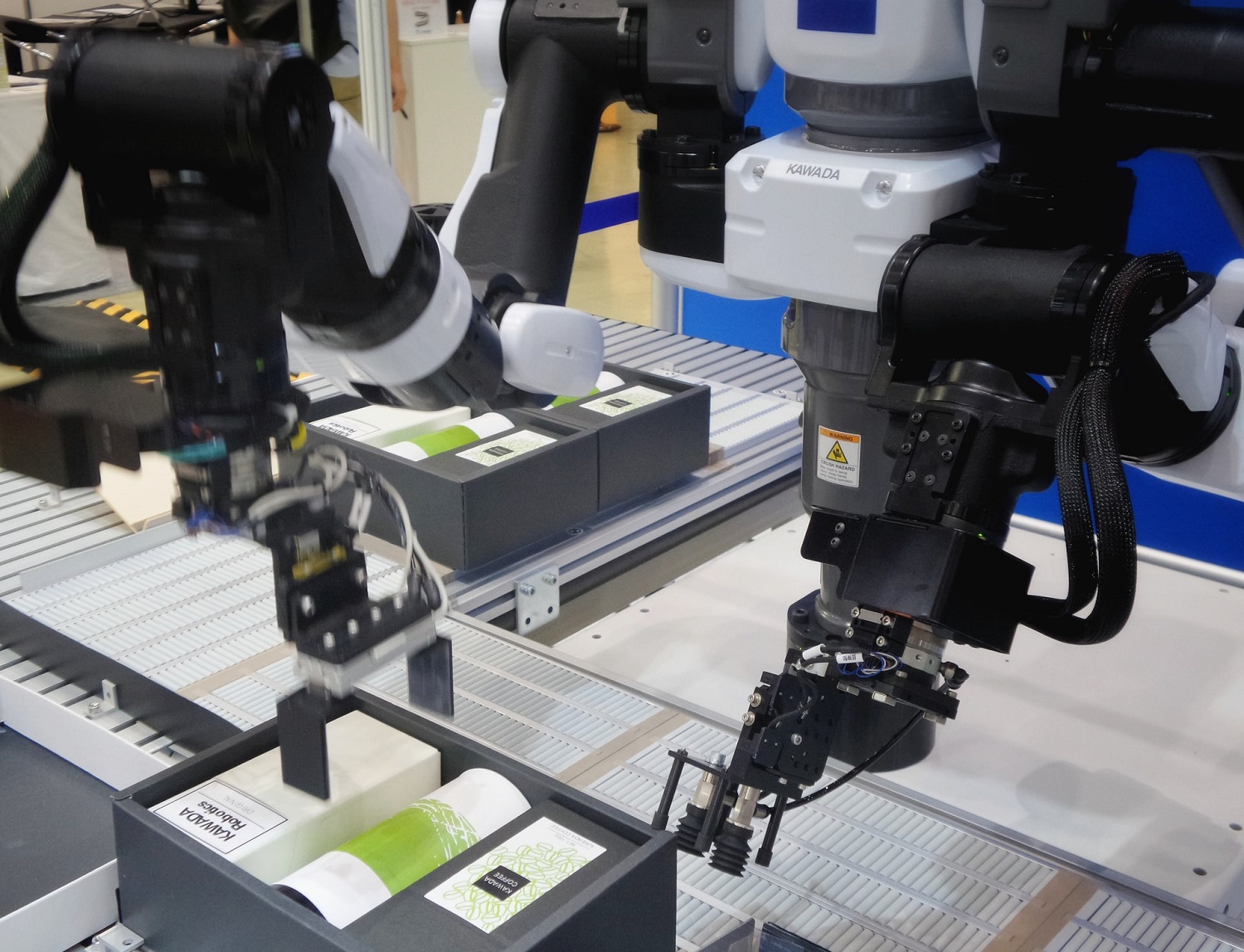

🔬 Research summary contributed by Nga Than (@NgaThanNYC), a doctoral candidate in the Sociology program at City University of New York – The Graduate Center.
✍️ This is part 4 of the ongoing Sociology of AI Ethics series; read previous entries here.
[Link to original paper + authors at the bottom]
Overview: This research examines the politics of technology and automation in China. Specifically, the author investigates how different actors including a local government, electronics companies, and workers perceived and made decisions about automation under China’s techno-developmentalism. The author found that all actors embraced the national government’s developmental policies, and reproduce automation imaginaries, “which embrace the abstract notions of technological progress over the actual efficacy of automation, labour protection, and social equality.” However, in the process, low-skilled workers were marginalized.
“Robots did achieve something, but something much smaller than we expected. Electronic devices have become increasingly delicate and thus require extra human labour in assembling. Robots release unskilled workers from certain tasks and allow workers to concentrate on tasks that require more physical dexterity and flexibility.”
— A manager of robotic automation in electronics manufacturing in Guangdong, China
The above quote exemplifies what managers in the electronics manufacturing sector in China recognized while implementing automation in their production lines. Integrating robots on an industrial scale requires coordinated efforts from different actors including the national and local governments, firms, and workers. Most research on automation has primarily focused on the Euro-American contexts while overlooking developing countries, whose socio-political contexts vary and differ from the developed countries’ contexts.
Given China has become the world’s largest user of robots, it’s important to understand how the country has been able to increase the use of robots in manufacturing. To understand the politics of technology, and power relations that created a framework that enabled automation on an industrial level, sociologist Ya-Wen Lei conducted research to examine the state-capital-labour-technology relationships in China. This study provides important insights into how automation is unfolding on the grounds in one of the world’s largest economies.
Lei conducted her study in the period of 2017 and 2019. She interviewed 92 people who were local government officers, managers of electronics manufacturing companies, and former and current workers of those companies in various cities in Guangdong, China. She asked a diverse set of questions to each group of actors, centring around their perception of automation, and how automation has affected their work. She chose the electronics manufacturing sector because it’s the second-largest buyer of industrial robots in China.
What is techno-developmentalism?
This term refers to “developmental agendas that prioritize the pursuit of technological advances, R&D and industrial upgrading.” Currently, developing countries “prioritize technology in their developmental agendas to enhance or maintain global competitiveness.” Through this lens, one should pay attention to the state-capital-labour-technology relationships when studying automation.
Made in China 2025
The author contextualized the study of automation through the “Made in China 2025” plan. This is a comprehensive national industrial policy announced in 2015 that aimed to “transform China into a global manufacturing leader by 2025.” Even though the national policy did not mention human-machine substitution, local governments initiated the replacement of human labour with machines as a way to accomplish national goals. Local governments then implemented policies that aim to “facilitate the upgrading of traditional industries and cultivate China’s robotics industries.”
One way to help manufacturers was through subsidies, which provided “incentives for businesses to invest in robots” (Cheng et al. 2019). The author pointed out that under China’s industrial policies the main relationships are those of state, capital, talent and technology while excluding low-skilled labour. The main players in these policies are the government — both national and local, firms, and high-skilled workers.
Local Developmental States
Lei interviewed local government officials who implemented local policies, and initiatives that drove firms’ human-robot substitution. She found that local officers reproduced the national narrative and believed that “technology and talent” were “key to upgrading China’s economy.” Their job was to help manufacturing companies increase robotization, upgrade the technology, and create “a market for China’s domestic robotics industry.”
However, they did not seem to be concerned with the social impacts of automation. To them, low-skilled workers were migrant workers who would eventually migrate back to where they came from if a full human-machine replacement scenario arose. Furthermore, the officials needed to go through a performance evaluation, whereby they would be evaluated based on robotization which must be aligned with the national policy.
Manufacturers
Most managers of electronics manufacturing companies offered a more critical take of the national government’s industrial policies. Their criticisms lie in three areas: (1) fraudulence; (2) the government’s fetishism of technology, and (3) robots’ limitations.
The managers were concerned with fraud. They pointed out that companies gamed the system to receive material benefits from the government such as subsidies and contracts. They thought that the return on automation investment is insignificant in increasing productivity.
They also criticized the government’s fetishism of technology or the belief that technology can solve all problems. They felt that policies “overestimated the power of robots.” Some companies had already automated certain parts of the production process. When receiving government subsidies, they installed more robots, but soon realized that the robots could not keep up with assembling delicate and expensive parts of consumer electronics products.
Managers found themselves “appreciating anew the unique qualities of human workers” and even expressed that “the human body is magic.” Robots’ limitations became more pronounced when consumer electronics products became more delicate, which required a higher level of “flexibility and precision in assembly.” Furthermore, the shortened product cycle means that engineers had to “redesign and adjust production lines,” which was complicated and costly. In practice, most automation is “limited to these 3 D’s: dirty, dull and dangerous,” while in electronics assembly, “human labour is still more suited to a large range of tasks.”
Managers also revealed that the lower demand for labour in Guangdong was not because of automation but because their plants and production lines had been moved to other countries with lower labour costs such as Vietnam. In other words, globalization affected low-skilled labour more than automation. They also employed “a decoupling strategy” to respond to government officials. Managers overstated “the productive value of robots in their communications with the media and the government.”
The author concluded that companies’ embrace of robots and automation technology “was largely based on their symbolic meaning rather than their perceived material properties,” in order to be considered as “high-tech.” This “high-tech” classification in the context of China is powerful, which could give them access to government resources. The managers wished the government had a “realistic understanding of technology” and “acknowledged the conditions of migrant workers and the manufacturers that employ them.”
Low-skilled Workers
Lei found that workers’ perception of human-machine substitution was shaped by their statuses as nationals, parents, and soon-to-be retirees. Their perspectives differed according to their age cohorts and life stages:
- Young workers in their twenties embraced the national narrative of technological progress. They believed that automation would not lead to serious unemployment problems as they could transition into the emerging platform service economy or obtain skills to operate robots.
- Workers in their thirties were most concerned with automation because they needed stable jobs to take care of their families, and they were most worried about their children’s social mobility.
- Workers in their forties were indifferent because they were soon to be retired, had grown-up children, and planned to go back to their hometown for retirement.
Conclusion
This research advanced our knowledge of automation on the ground in developing countries. The author created a theoretical framework for more empirical work in this area to replicate in other contexts. Automation and artificial intelligence development are global processes. More developing countries will adopt China-like techno-developmental industrial policies. Given the complex socio-political contexts of the different developing nations, there’s a dire need to examine automation in contexts outside of the Global North. Furthermore, it’s important to centre the politics and power relations of technology in an understanding of the larger forces that enable automation.
Acknowledgement: Nga Than thanks Dr. Ya-Wen Lei for sharing an early draft of the article for this summary. The paper is forthcoming at Work, Employment and Society.
References:
- Cheng, H., Jia, R., Li, D., & Li, H. (2019). The rise of robots in China. Journal of Economic Perspectives, 33(2), 71-88.
- Lei, Y. W. 2021. Upgrading China Through Automation: Manufacturers, Workers and the Techno-Developmental State. Work, Employment and Society, Forthcoming.
